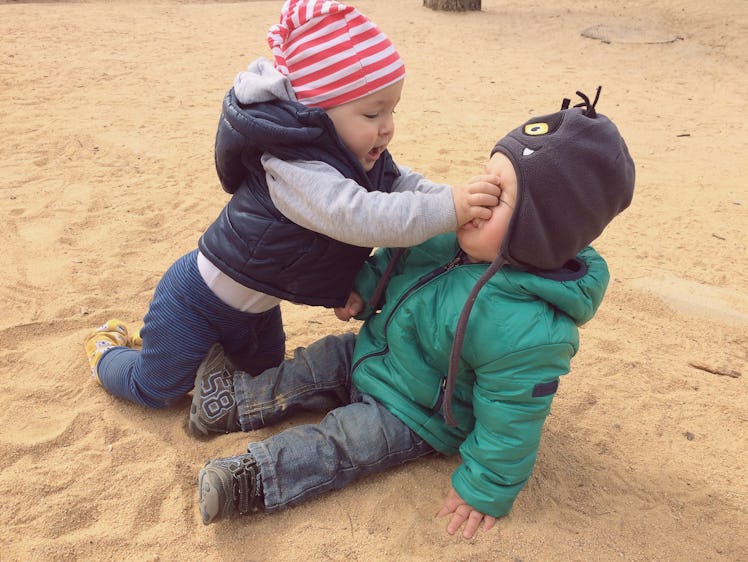Aggression In Young Kids Is Likely Genetic, But Growing Out Of It Isn’t
If your toddler is aggressive, blame your genes. If your teenager is, maybe blame yourself.

Early childhood aggression may be mostly a result of genetics, but recent research suggests that whether the tendency toward lashing out increases or decreases as kids grow up depends on environmental factors. The findings, published in PLOS One, suggest that young kids who display physical aggression may be going through a natural cognitive and genetic growth. More importantly, they may not stay that way if their surroundings aren’t similarly aggressive.
“Our results have revealed the importance of developing different prevention methods for reactive and proactive aggression, specifically by offering support to families and providing interventions in schools,” study co-author Stéphane Paquin, a Ph.D. candidate in sociology at Université de Montréal, said in a statement.
According to past research, there are two types of aggression based on their function — proactive and reactive. Proactive aggression refers to aggressive behavior for the purpose of personal gain (often at the expense of others), while reactive aggression is a defensive reaction to a perceived threat. Some people only display reactive aggression, but studies show they’re closely related.
Developmental data shows that physical aggression peaks at ages 2 and 4 and decreases with time as kids develop more coping skills. However, little research has looked at how proactive and reactive aggression develop over a period of time in children.
In order to determine this, Paquin and colleagues followed the aggressive behaviors of 555 pairs of twins — 223 sets of twins with identical genetic codes, along with 332 sets of fraternal twins. Children’s aggressive behaviors were assessed and reported by their teachers at ages 6, 7, 9, 10, and 12. Researchers then analyzed this data on both types of aggression using a multivariate latent growth curve model to chart changes.
Results showed that common genetic factors drove a majority proactive and reactive aggression at age 6. As kids got older, aggression was more influenced by environment. This indicates that a normal genetic maturation process is taking place that may signal the development of cognitive functions like decision-making, control, and concentration.
Though important for potentially mitigating violent behavior in children later in life, the research has its limitations. The sample included more than 1,000 kids, but it wasn’t large enough to account for potential gender differences. Twin studies also require some estimation of how much environmental and genetic factors matter, and multivariate models come with caveats as well. The data needs to be duplicated and future research needs to look more closely at what environmental factors matter most for stoking or quelling aggression — information that Paquin is optimistic about uncovering.
“This work will also have a direct impact on clinical practices and prevention programs,” Paquin added. This could mean an entire generation of calmer, less violent kids, which is good for everyone — even their parents, who would look more like hotheads by comparison.
This article was originally published on